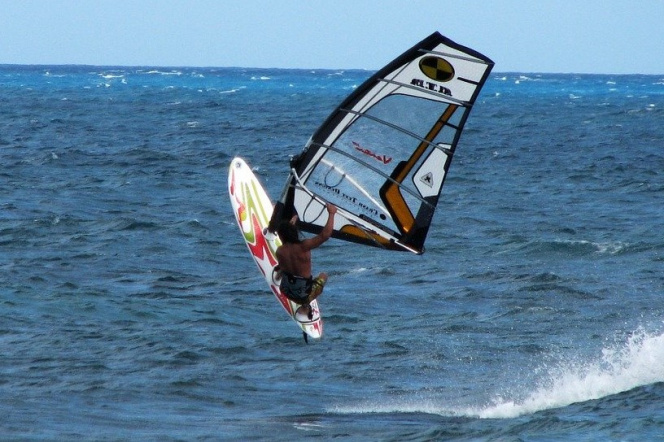Date added: 2022-01-24
The same fins on the boards, a different way of sailing. Scientists are studying the problem

– The Polish Yachting Association approached us with various issues related to the interpenetration of science and sport. One of the topics that interested me the most was the selection of fins for windsurf boards - says MSc. Hanna Pruszko from the Institute of Ocean Engineering and Ship Technology.
Same appearance, different possibilities
The fin is an element made of composite, moreover, it is a so-called monotype, that is, theoretically, each piece should be identical. All this is done to eliminate the influence of the equipment and so that only the skills of the competitor count. - Unfortunately, it turns out that the reality is completely different. There is a lot of uncertainty and variability in the production process itself, and a large part of the work is done by hand. That is why two identical looking fins, when put on the board, have different properties and the competitors can sense it - adds the scientist. Until now, they would buy a set of 10-20 fins, sail each one in turn and choose two or three fins from the whole batch. This is a big waste of time and money.
Research at Gdańsk University of Technology
Scientists from Gdańsk University of Technology decided to investigate this problem. It is true that the Olympic class has changed in the meantime, instead of the RS: X board (which was completely in the water - the fin was designed to generate lift to keep the board flowing straight, not in a drift) there is iQFOiL (there is a whole set of airfoils under the water and the board floats above the water), yet the problem remained.
– We conducted stiffness identification studies in order to be able to create reliable computational models, structure response to hydromechanical loads. Then we built coupled models - we studied how the hydromechanical loads would act on the response of the deformed structure. Later, the deformed - properly bent, twisted - structure will start to generate different hydromechanical forces. It is these hydromechanical forces that the competitors feel and they see which fin or foil allows them to swim faster and which slower - points out Hanna Pruszko.
Now, laboratory tests and calculations are being carried out. Scientists are challenged to study the problem under real-life conditions.
Research by MSc, Eng. Hanna Pruszko was conducted under the leadership of PhD, DSc, Eng. Tomasz Mikulski, university professor. PhD, Eng. Artur Karczewski works on the iQFOiL class.



